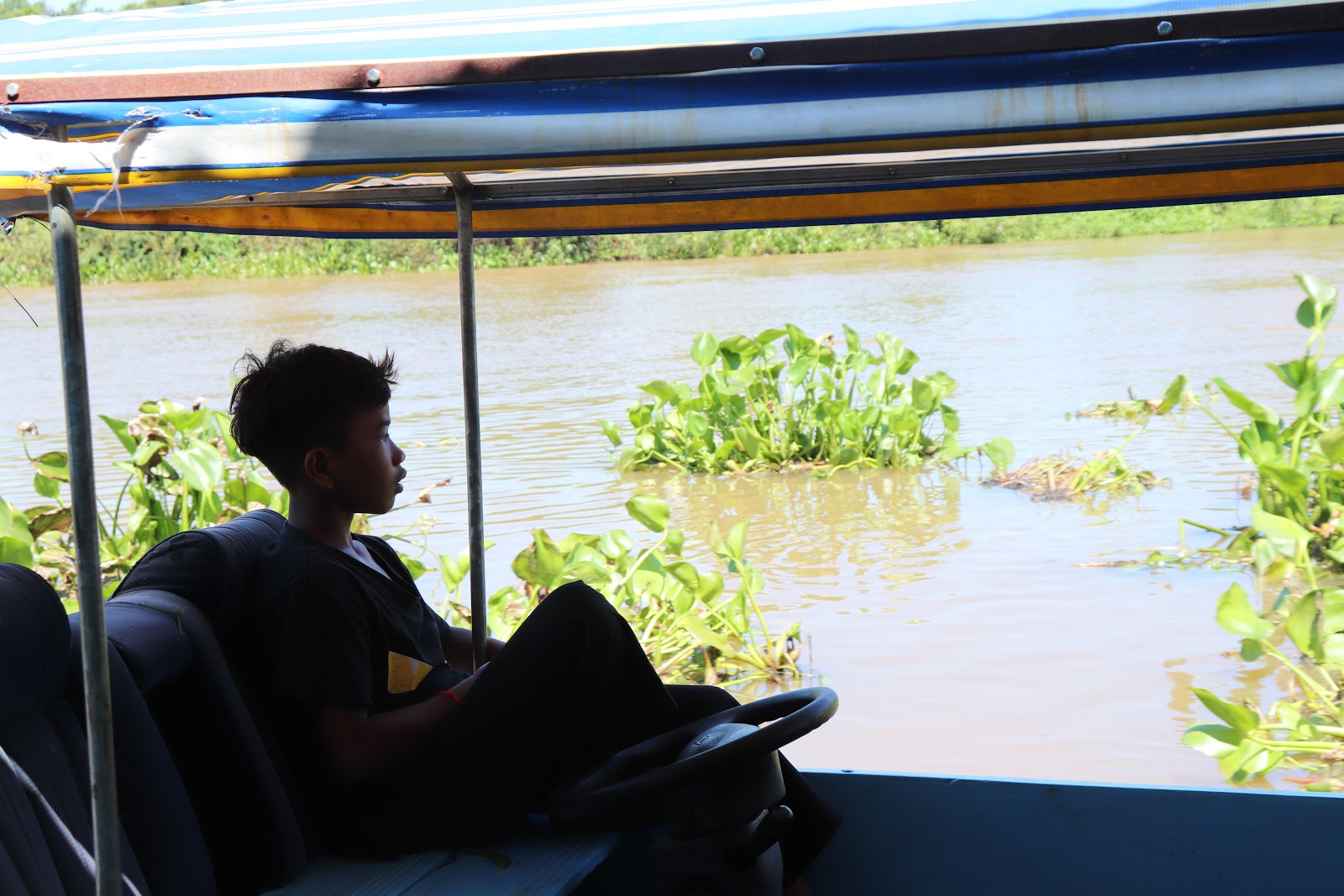Identity of Cambodian Giant Barb?
Written By: Seng Sivmey, YEA: Mekong Generation 2
Publication Date: 01 March 2021
Translated and Authorized By: Young Eco Ambassador
We have seen fish smaller than people? What about a fish bigger than people?
In other countries, there is a saltwater fish species called Whale, which could weigh up to 190 tonnes. In Cambodia, we also have a special freshwater species called the Giant Barb. This fish survives on moss, planktons, plants, and smaller fishes as food. They are of a giant species that could grow up to 300 Km and 2-3 meters in length. You can imagine. If a 100-Kg person is this big, how big is a 300Kg fish? Don’t tell us it is as big as a bulldozer.

Their entire body is covered by scales as big as coins, except for the heads and fins.
Where are they?
The Giant Barb is a freshwater species in our country, but it does not always like to stay in the same lake. To avoid emotional stress, they migrate from the Tonle Sap Lake into the deeper Mekong river at the end of the dry season, around late September or early October. This fish species is incredibly smart as they could easily adjust to different living environments of both Lake and River, which does not come as easy to other fishes. We also cannot blame other fish because the Giant Barb itself is already hailed as the ‘Queen of Lake’. They are truly blessed with such a cool nickname.
More than 500 species in Cambodia, but why does the Giant Barb represent Cambodia?
Maybe it was a lucky draw.
It is true that Cambodia has more than hundreds of known freshwater fish species, but why did our government choose the Giant Barb? Of course, the fish shall have some special characteristics. It has been 15 years since the Giant Barb was declared as the fishing symbol of Cambodia, according to the declaration /0305/149 in 2005. There are some reasons that the Ministry of Agriculture, Forestry, and Fisheries decided to have the Giant Bard as the national fish:
1. Long-lasting Friendship
The Giant Barb has a long relationship with Cambodian people since the Pre-Angkor era. We could see that there are many carvings on the Bayon temple depicting the everyday lives of people from the era.
Their entire body is covered by scales as big as coins, except for the heads and fins.
Where are they?
The Giant Barb is a freshwater species in our country, but it does not always like to stay in the same lake. To avoid emotional stress, they migrate from the Tonle Sap Lake into the deeper Mekong river at the end of the dry season, around late September or early October. This fish species is incredibly smart as they could easily adjust to different living environments of both Lake and River, which does not come as easy to other fishes. We also cannot blame other fish because the Giant Barb itself is already hailed as the ‘Queen of Lake’. They are truly blessed with such a cool nickname.
More than 500 species in Cambodia, but why does the Giant Barb represent Cambodia?
Maybe it was a lucky draw.
It is true that Cambodia has more than hundreds of known freshwater fish species, but why did our government choose the Giant Barb? Of course, the fish shall have some special characteristics. It has been 15 years since the Giant Barb was declared as the fishing symbol of Cambodia, according to the declaration /0305/149 in 2005. There are some reasons that the Ministry of Agriculture, Forestry, and Fisheries decided to have the Giant Bard as the national fish:
1. Long-lasting Friendship
The Giant Barb has a long relationship with Cambodian people since the Pre-Angkor era. We could see that there are many carvings on the Bayon temple depicting the everyday lives of people from the era.

Do you believe this tale? If you have been to the Bayon temple, you will surely see the carvings. Don’t forget to send us some photos too.
2. To what extend do we know them?
Thanks to significant evidence, the Giant Barb is very well-known to Cambodian people. The people could recognize them easily by their physical traits, including shape and size. They could tell by first glance. Not only that, during the colonial era, the people used to make homemade kickball as entertaining as today’s Mobile Legend (Mobile Game’s name).

3. Last reason: Miss Freshwater
If only there is a beauty pageant held underwater. What an exaggeration to the readers! There might be no such thing as a beauty pageant for the fishes. However, the Giant Barb does look extraordinarily different from other fishes thanks to its shiny scales sparkling again the sunlight, and it is also the largest and longest fish in Cambodia too.
How many are remaining in the wild?
Given how big they are, can they produce many children? However, the Giant Barb has been listed in the IUCN Red List as a (CE) Critically Endangered species in 2011 due to overfishing, fishing during the spawning period, using young fishes as baits, illegal fishing equipment, and hydropower development plans along the Mekong river which could disrupt their migration route.
The Poor Giant Barb.
The Giant Barb is an identity of Cambodia, just like Angkor Wat Temple which is our heart and soul. Angkor Wat has been highly acknowledged and protected by the government and people. However, despite the effort to conserve and raise awareness by the government, Wonders of the Mekong Project, and Youth groups like Young Eco Ambassador, the knowledge of Cambodian people is still very limited.
I hope that this article will help you learn something new that you have never thought of you, and it would encourage you to help preserve this symbolized value of Cambodia.
“The Cambodia National Identity is a fish?” is one of the three blog articles written by Seng Sivmey, YEA: Mekong Generation 2.
*Youth Program: Mekong Generation2 has been trained by Wapatoa and YEA team.



